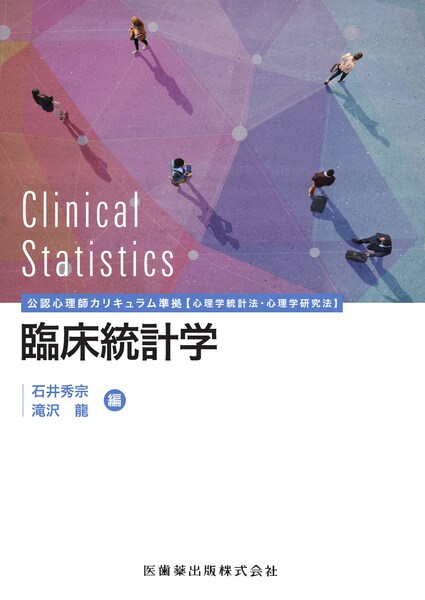
Title
Certified Public Psychologist Curriculum Compliance Series Rinsho-Tokeigaku (Clinical Statistics - Certified Public Psychologist Curriculum Compliance: statistical methods and research methods for psychology)
Size
248 pages, B5 format
Language
Japanese
Released
March, 2021
ISBN
978-4-263-26635-9
Published by
Ishiyaku Pub,Inc.
Book Info
See Book Availability at Library
Japanese Page
In Japanese, the Chinese characters that make up the word “clinical” contain the characters for “floor” and “approach,” indicating the roots of clinical practice of asking people who have no choice but to lie on the floor, “Is there anything that I can do to help?” The issues that require psychology specialists to support clients in a clinical setting are extremely varied and thus require flexible measures. As you gain experience dealing with various situations, certain “categories” and “patterns” start to emerge if you take a step back. You start to see positive outcomes when you use these “categories” to explain and discuss ways to deal with cases. In some cases, these “categories” become even clearer when practical knowledge is compiled.
Such practical knowledge includes many past accounts by famous clinicians, which can be quite enlightening and serve as useful references. At the same time, such accounts often include biases stemming from the particular viewpoint of the writer, and thus may not be as useful or difficult to use in actual clinical settings. In some cases, the issue may lie with the writer; however, there are undoubtedly cases where the issue lies with the reader.
Yet, regarding the clinical support of psychological problems, much attention is paid to scientific evidence-based practices. Such evidence allows clinicians to explain reasons for the consultations and interventions that they implement psychological problems. Although there are many definitions of “science,” if science is defined as something “that yields the same general results when carried out in the same manner by anyone—i.e., something that is reproducible,” that same characterization applies to the “categories” and “patterns” described above. The ideal situation is to be able to demonstrate certain common and universal aspects of such “categories” using psychological research methods and statistical methods or to be able to apply the practical knowledge obtained through such analysis in clinical settings. This book provides basic knowledge to enable such scientific evidence-based practices to be used in clinical settings.
This book, titled Clinical Statistics, was written based on the curriculum standards for certified public psychologists and is intended for a broad audience that includes students of psychology and clinical experts who are brushing up on basic psychological research and statistical methods. Although many good textbooks on psychological research methods and statistical methods already exist, this book focuses on statistical methods that are useful in the clinical setting. To this end, the writing team included young psychological researchers with expertise in the areas of clinical, personality, and developmental psychology. To make the book accessible to clinicians just starting their careers, the book includes an introduction written as a conversation between faculty and student as well as a section on goals and stand-alone articles. The book should prove useful for a wide range of applications in addition to exam preparation.
In closing this book summary, I would like to introduce an excerpt from the book’s Preface. “The goal of Clinical Statistics is to provide statistical instruction that will be useful in the clinical setting. Thus, the reader will not find instruction on research methods that will help with the writing of papers or instruction on how to operate statistical software. Instead, the book seeks to cultivate the ability to think rationally and make logical decisions and to introduce research and statistical methods that will enable psychology specialists and all individuals in clinical settings to deal with challenges and solve problems that they encounter in clinical settings.”
(Written by TAKIZAWA Ryu, Associate Professor, Graduate School of Education / 2021)
Related Info
Ryu Takizawa M.D., Ph.D.
Stress, Bio-marker & Life-course Health Lab.
http://www.p.u-tokyo.ac.jp/~takizawa-lab/



 Find a book
Find a book


 eBook
eBook